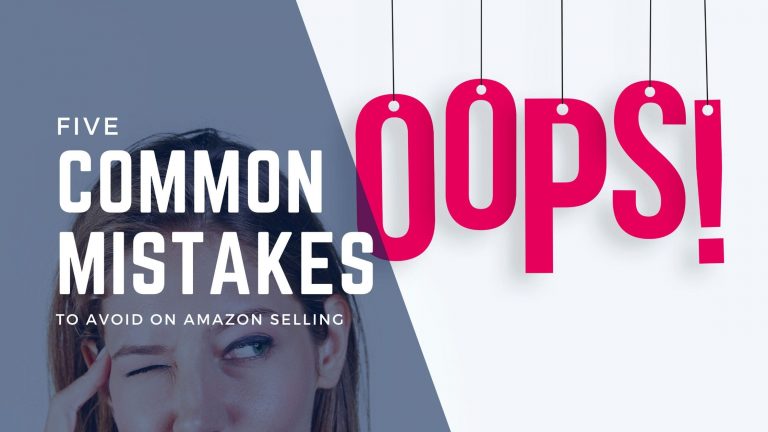Introduction
Hey there, aspiring Amazon sellers in India! Are you ready to dive into the exciting world of e-commerce? Before you jump in, let's chat about something important. The Amazon India marketplace is like a bustling bazaar, full of opportunities and challenges. It's a place where your business dreams can come true, but it's also a place where you might stumble if you're not careful.
Did you know that in 2022, Amazon India had over 1 million sellers? That's a lot of competition! But don't worry, there's plenty of room for newcomers like you. The key is to start on the right foot and avoid some common pitfalls that trip up many new sellers.
In this post, we're going to talk about five mistakes that new Amazon sellers in India often make. By knowing these in advance, you'll be better prepared to navigate the Amazon jungle and set yourself up for long-term success. So, grab a cup of chai, and let's get started!
Mistake 1: Poor Product Research
Imagine you're at a mela (fair), and you decide to set up a stall. Would you sell something that everyone else is already offering? Probably not, right? The same logic applies to selling on Amazon.
The Importance of Selecting the Right Products
Choosing what to sell is like picking the perfect recipe for your family's favorite dish. You need to find products that people want but aren't overly saturated in the market. It's all about finding that sweet spot between demand and competition.
- Start with a selling price of around ₹599 for better affordability and profits.
- Opt for lightweight products to reduce shipping costs.
- Pick durable items to avoid returns and complaints.
- Ensure the product solves a problem or fulfills a need in the market.
- Choose a product with high demand.
Tools for Product Research
Luckily, you don't have to rely on guesswork. There are some great tools out there to help you with your product research:
- Helium 10: It offers tools like Black Box for product selection.
- Amazon Best Sellers list: Sometimes, the simplest tools are right under our noses!
These tools can give you insights into what's selling well, how much competition there is, and even seasonal trends. It's like having a crystal ball for your Amazon business!
Mistake 2: Not Contacting Enough Manufacturers – Missing Out on Better Deals
I get it – reaching out to manufacturers can feel intimidating. But it's worth contacting multiple suppliers before the purchase.
Here's what I suggest:
- Contact at least 5-10 manufacturers for each product
- Compare prices, minimum order quantities, and sample costs
- Ask about customization options
- Don't forget to inquire about their production capacity
You might be surprised at the deals you can find just by asking!
Mistake 3: Overpaying for Products – You Make Money When You purchase
This one's a biggie! It's easy to get excited and jump at the first offer, but remember – your profit margin starts with your buying cost.
Some tips to avoid overpaying:
- Negotiate! It's expected in business
- Buy in larger quantities for better prices (but be careful not to overstock)
- Look for manufacturers in different regions – prices can vary
- Consider the total cost, including shipping and customs fees
Remember, every rupee saved on buying is a rupee earned in profit!
Mistake 4: Setting Selling Prices Based Solely on Cost Price – Ignoring Market Trends and Competitor Strategies
Pricing your products on Amazon is a bit like cooking – too much or too little of any ingredient can spoil the dish. Let's talk about finding that perfect balance.
Pricing is tricky. At first, I thought I just needed to add a markup to my cost price. But there's more to it than that.
Here's what I've learned about pricing:
- Check what similar products are selling for
- Consider your unique selling points – can you charge a premium?
- Factor in seasonal changes – prices might go up during festivals
- Don't forget about Amazon fees and your own costs
- Check if a few other suppliers are offering the same price as yours
It's a balancing act between being competitive and making a profit. Keep an eye on the market and be ready to adjust your prices.
Mistake 5: Ineffective Product Launch – Why a Strong Start is Key to Amazon Success
Launching your product is like introducing yourself at a party – you want to make a good first impression! It is not wise just listing the product and hoping for the best. Not the smartest move!
Here's how to launch like a pro:
- Form a small group that can help promote your product and leave legitimate reviews. This launch team can help spread the word and give your product the momentum it needs in the initial stages
- Use Amazon's promotional tools like coupons and lightning deals
- Reach out to friends and family for honest reviews (but don't ask for positive reviews – that's against Amazon's rules!)
- Optimize your listing with great photos and clear descriptions
A strong launch can give your product the boost it needs to start showing up in search results.
Conclusion
Wow, we've covered a lot of ground, haven't we?
Avoiding these mistakes isn't just about dodging problems – it's about setting yourself up for success. By doing thorough product research, creating awesome listings, following Amazon's rules, pricing smartly, and providing great customer service, you're building a strong foundation for your Amazon business.
Remember, every successful Amazon seller was once a beginner, just like you. They learned, adapted, and grew. And you can too! Don't be afraid to make mistakes – they're part of the learning process. The key is to learn from them and keep improving.
So, are you ready to start your Amazon selling journey? Take what you've learned here, do your homework, and go for it! The Amazon marketplace in India is full of opportunities, and with the right approach, you can build a thriving business.








2 Responses
Valueable information
Thank you
Attentd your course long back
Made my own brand now
Stepping to launch my first product
Hope springs eternal